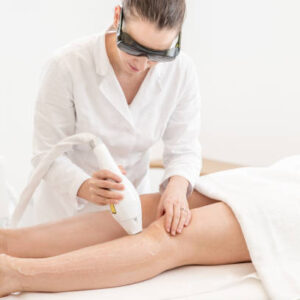Guided Bone Regeneration (GBR) is a common technique used in dental and maxillofacial surgery to regenerate bone in areas where it has been lost due to trauma, disease, or extraction. GBR procedures involve using barrier membranes to exclude epithelial and connective tissue cells from the bony defect, allowing for the selective repopulation of bone cells. This article will provide a step-by-step guide to performing GBR procedures.
Step 1: Preoperative Evaluation
Before starting a GBR procedure, a thorough preoperative evaluation of the patient is essential. This evaluation should include a comprehensive medical and dental history, clinical examination, radiographic assessment, and assessment of the defect site. It is crucial to identify any systemic conditions or local factors that may affect the success of the procedure.
Step 2: Anesthesia
Once the preoperative evaluation is complete, guided implantology videos the next step is to administer local anesthesia to ensure the patient’s comfort during the procedure. Adequate anesthesia is essential to prevent pain and discomfort for the patient throughout the surgery.
Step 3: Flap Design and Reflection
The next step in performing a GBR procedure is to design and reflect a full-thickness flap to expose the defect site. The flap should be carefully designed to provide adequate access and visibility to the surgical site while minimizing trauma to the surrounding tissues. Proper flap reflection is crucial for successful outcomes in GBR procedures.
Step 4: Debridement and Preparation of the Defect Site
Once the flap has been reflected, the next step is to thoroughly debride the defect site to remove any diseased or necrotic tissue. The defect site should be carefully cleaned and prepared to create a stable environment for new bone formation. Proper debridement is essential for the success of the GBR procedure.
Step 5: Membrane Placement
After the defect site has been prepared, the next step is to place a barrier membrane over the defect to exclude epithelial and connective tissue cells. The membrane should be carefully adapted to the surrounding bone and secured in place to create a space for new bone growth. The membrane acts as a barrier to prevent soft tissue ingrowth and promote bone regeneration.
Step 6: Bone Grafting
Once the membrane is in place, the next step is to graft bone into the defect site to promote new bone formation. The bone graft material can be autogenous, allogeneic, xenogeneic, or synthetic, depending on the specific requirements of the case. The bone graft should be carefully placed to ensure good contact with the surrounding bone and membrane.
Step 7: Flap Repositioning and Suturing
After the bone graft has been placed, the flap is repositioned and sutured back in place to cover the surgical site. The flap should be carefully sutured to achieve primary closure and stabilize the graft material. Proper flap repositioning and suturing are essential to protect the graft and membrane and facilitate optimal healing.
Postoperative Care and Follow-Up
Following the GBR procedure, postoperative care instructions should be provided to the patient to promote healing and prevent complications. Patients should be advised on proper oral hygiene, diet, and medication use. Follow-up appointments should be scheduled to monitor the healing process and assess the success of the procedure.
Conclusion
Guided Bone Regeneration videos procedures play a crucial role in reconstructing bone defects in the oral and maxillofacial region. By following a step-by-step approach and ensuring meticulous technique, clinicians can achieve successful outcomes in GBR procedures. Proper preoperative evaluation, careful surgical technique, and comprehensive postoperative care are essential for the success of GBR procedures. With advancements in materials and techniques, GBR continues to be a valuable tool in promoting bone regeneration and improving patient outcomes in dental and maxillofacial surgery.

